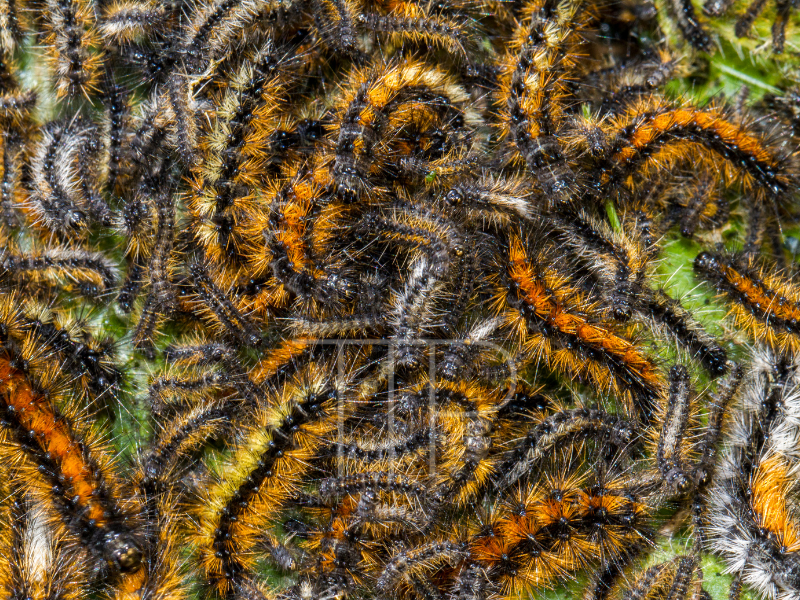The toxic effect of contact with the pine caterpillar causes swelling, irritation and sometimes breathing difficulties. Find out what to do in the event of an allergic reaction.
After the Lisbon City Council warned of allergic reactions due to the fact that the pine caterpillar is in its procession phase until the end of February, the Portuguese Association for Consumer Protection (DECO) has issued a clarification on the subject, namely on who is at risk and the symptoms and forms of treatment.
What is the pine caterpillar?
DECO explains that the pine caterpillar, also known as processionary, is an insect that defoliates pine and cedar trees in Portugal.
The name “derives from the fact that it moves in a row, forming long processions of caterpillars as they pass from the trees to the ground to burrow and chrysalis (turn from a caterpillar into a butterfly)”. The life cycle of the pine caterpillar has two stages – “the adult stage, which is aerial, formed by the eggs and caterpillars, and the pupal stage, which is underground”.
“Depending on various factors, such as weather conditions, it is usually between January and April that the caterpillars descend from the pine trees. During this journey, they release stinging hairs which, in contact with the skin, mucous membranes and eyes, are responsible for allergies in people and animals,” explains the association.
According to DECO, “there has been an increase in this pest in recent years, mainly due to climatic conditions” and, in urban environments, it requires “constant vigilance and an urgent and timely fight to avoid risks to public health”.
The presence of the pine caterpillar “is easy to see on trees”. Between July and November, “clumps of reddish needles, connected by silky threads, can be seen on branches exposed to the sun”. In addition, “large, pocket-shaped nests made up of white, silky threads appear at the tips of branches exposed to the sun from the fall onwards.”
What to do if you find them in urban areas?
If you find them in public spaces in urban areas, “move away and contact the authorities, such as Civil Protection, the local council or the regional services of the Institute for Nature Conservation and Forests (ICNF)”, advises DECO. The solution to combating the pine caterpillar plague “is to take measures to control the insect and never to cut down infested trees”.
The symptoms of an allergic reaction
The association explains that contact “with the caterpillar’s stinging hairs” can cause an allergic reaction. This “varies depending on the sensitivity of the person and the intensity of exposure to the hairs”.
Skin irritations can occur, “in which there is skin irritation with itching, burning, red skin and swelling”. The skin lesions “have maculopapular characteristics (well-circumscribed spots) and may be accompanied by vesicles”.
Eye irritation can also occur, which “is very similar to conjunctivitis, with reddened eyes, itching and swelling”.
In addition, inhaling the dander “can trigger coughing and breathing difficulties of varying severity”.
Symptoms can appear “a few minutes or hours after contact and persist for several hours or days”.
How to treat
DECO notes that treatment depends on the intensity of the symptoms, but you can “wash the skin or eyes with running water”, “remove any stinging hairs that may have remained on the skin (you can use a patch, for example)”, “change clothes and wash them at high temperatures (equal to or greater than 60ºC)”, “apply a corticoid-based ointment to the site of the allergic reaction” or “take an antihistamine”.
In the case of eye contact, “observation by an ophthalmologist is recommended”. If the allergic reaction is more intense, “you should go to a hospital emergency room for observation”. If necessary, call 112. You can also contact the Poisons Information Center (CIAV) – 800 250 250.
Bearing in mind that people are not the only ones to suffer from these caterpillars and that animals are also sensitive to contact with them, remember that you should go “to a veterinary doctor, especially in the case of dogs and cats”, advises the Association.


[…] Related article: Pine caterpillar! Find out the symptoms of allergies […]